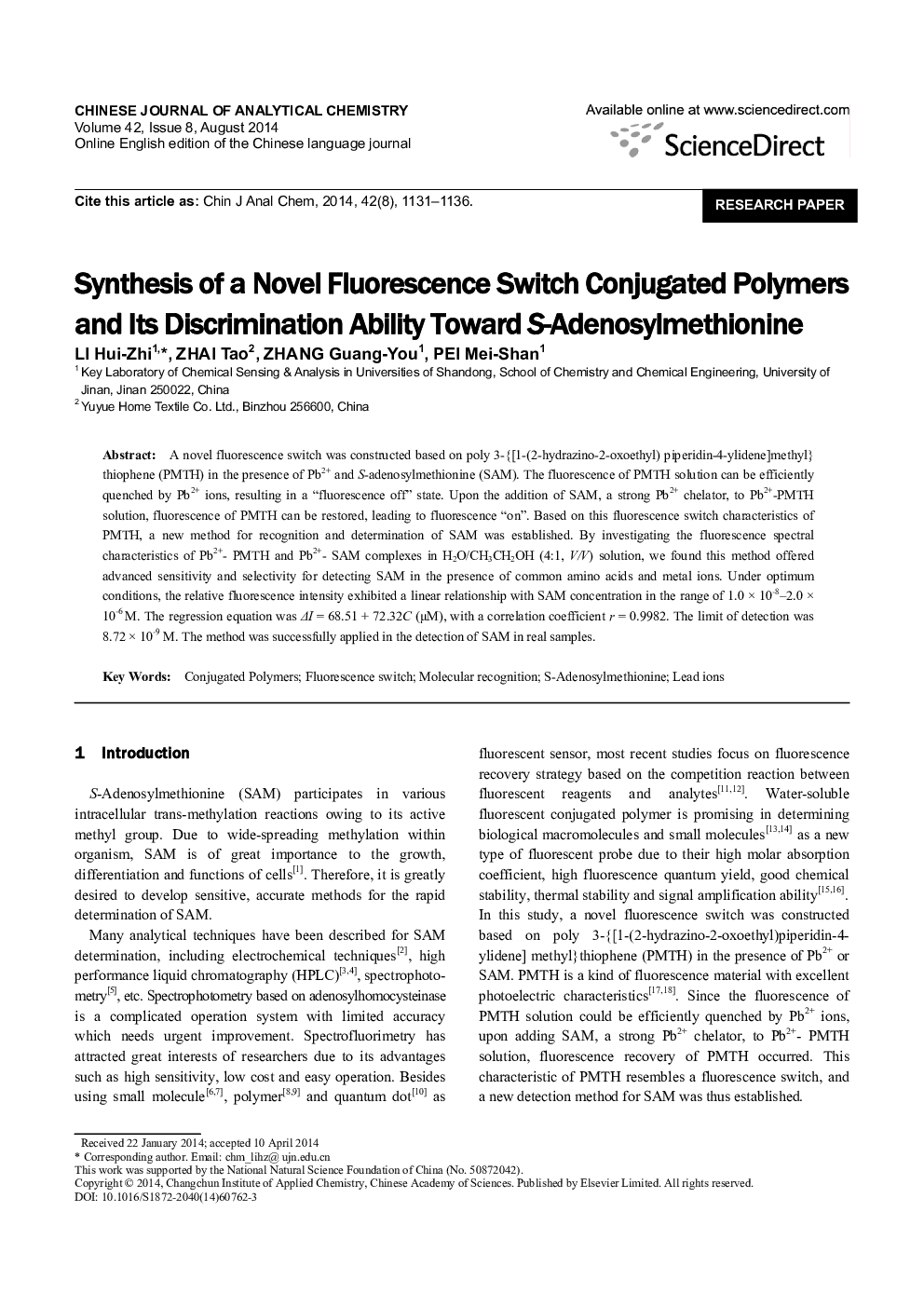| Article ID | Journal | Published Year | Pages | File Type |
|---|---|---|---|---|
| 1182520 | Chinese Journal of Analytical Chemistry | 2014 | 5 Pages |
A novel fluorescence switch was constructed based on poly 3-{[1-(2-hydrazino-2-oxoethyl) piperidin-4-ylidene]methyl} thiophene (PMTH) in the presence of Pb2+ and S-adenosylmethionine (SAM). The fluorescence of PMTH solution can be efficiently quenched by Pb2+ ions, resulting in a “fluorescence off” state. Upon the addition of SAM, a strong Pb2+ chelator, to Pb2+-PMTH solution, fluorescence of PMTH can be restored, leading to fluorescence “on”. Based on this fluorescence switch characteristics of PMTH, a new method for recognition and determination of SAM was established. By investigating the fluorescence spectral characteristics of Pb2+-PMTH and Pb2+-SAM complexes in H2O/CH3CH2OH (4:1, V/V) solution, we found this method offered advanced sensitivity and selectivity for detecting SAM in the presence of common amino acids and metal ions. Under optimum conditions, the relative fluorescence intensity exhibited a linear relationship with SAM concentration in the range of 1.0 ×−8–2.0 × 10−6 M. The regression equation was Δ 68.51 + 72.32C (μith a correlation coefficient r = 0.9982. The limit of detection was 8.72 × 10−9 M. The method was successfully applied in the detection of SAM in real samples.
Graphical abstractA new SAM-detecting method was established by designing a fluorescence “off-on” probe based on water-soluble conjugated polymers (PMTH). The fluorescence of PMTH solution is efficiently quenched by Pb2+ ions. The sensitivity was greatly enhanced with a detection limit of 8.72 × 10−9 M.Figure optionsDownload full-size imageDownload as PowerPoint slide
